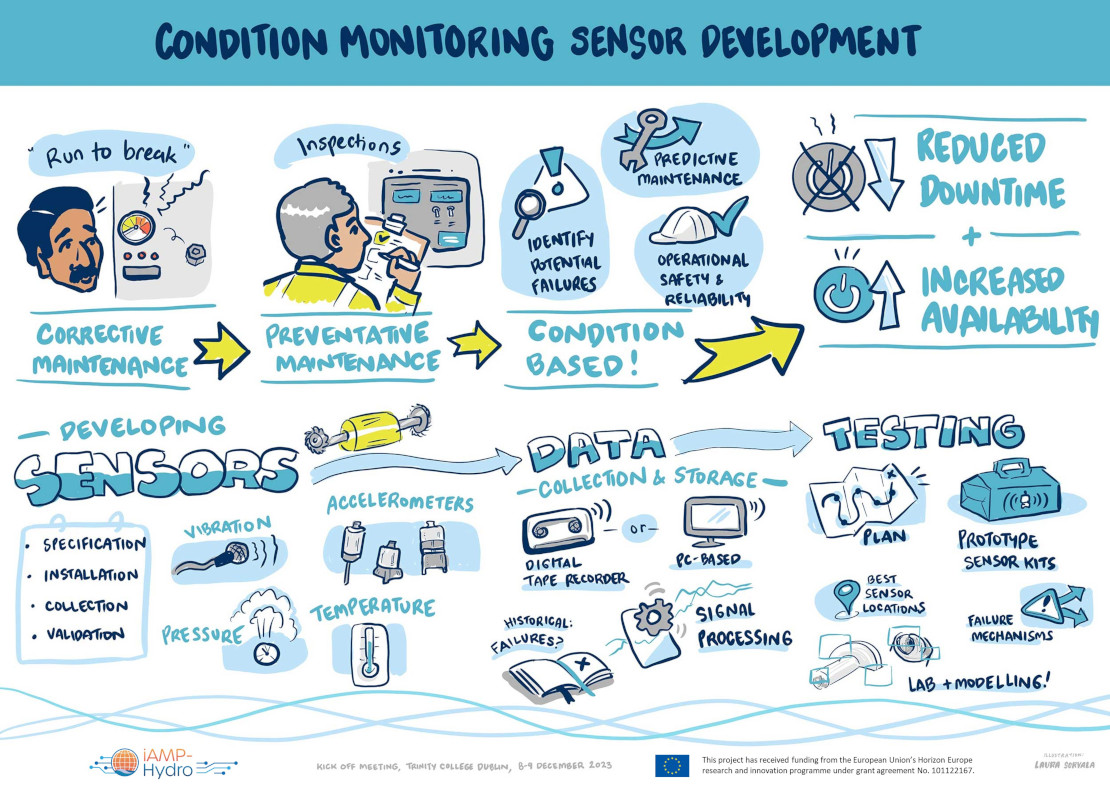
Worked on in work package 2, lead by TCD
Challenge:
WP2 tackles the challenge of effectively maintaining hydropower electromechanical equipment. Existing maintenance practices are reactive, resulting in heightened downtime and increased costs related to spare parts warehousing. Threats like fatigue, wear, cavitation, and mechanical imbalances further compromise equipment performance, particularly during transient operations. The imperative is to shift from reactive to predictive maintenance, leveraging industry 4.0 practices. Predictive maintenance, grounded in sensor data, seeks to identify potential failures and recommend timely preventive measures, reducing downtime and cutting maintenance costs.
Solution in prospect:
WP2 presents an innovative solution through the development of a precise and adaptable condition monitoring suite. This suite integrates diverse data sources—vibration, acoustic, temperature, voltage, and current data—offering a holistic view of equipment health. WP2's objectives are achieved through two pivotal sub-tasks: Task 2.1 - Sensor Specification and Development and Task 2.2 - Sensor Design and Assembly for Field Validations. Through advanced sensor development and methodologies such as frequency and wavelet analysis, WP2 aims to enable the prediction of operational and maintenance needs for hydropower equipment. The adoption of predictive maintenance techniques is expected to yield substantial material cost savings, increased equipment uptime, and enhanced maintenance planning efficiency, aligning with the industry's proactive shift towards data-driven maintenance practices.
